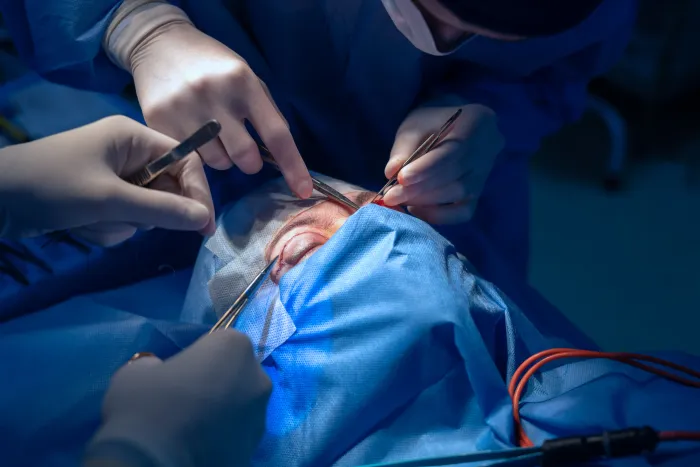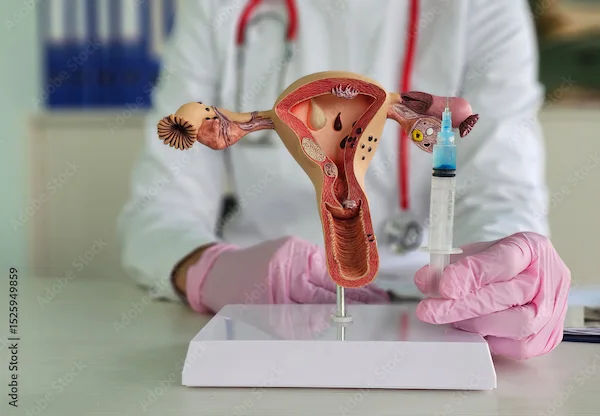Guide to Aesthetic And Reconstructive Surgery
Know about the reconstructive surgery, what it is, safety, risks, recovery and journey of recovery and more.


Introduction
Thinking about surgery can be exciting, emotional, and overwhelming, especially when you’re sorting out category/aesthetic procedures from reconstructive options. This practical guide explains what “category/aesthetic and reconstructive surgery” really means, how they differ, and where they overlap. We’ll compare common procedures, risks, costs, and recovery timelines, and help you decide whether an elective aesthetic procedure or a reconstructive operation to restore function is right for you. You’ll also learn how to choose a qualified surgeon and accredited facility, what to expect before and after surgery, and how innovations like 3D planning and enhanced recovery protocols can improve outcomes. If you have ongoing symptoms or complex medical conditions, consult a doctor online with Apollo24|7 for personalised guidance and pre-operative readiness.
Consult Top General Practitioner for Personalised Advice
What aesthetic and reconstructive surgery means
Definitions and core differences
1. Aesthetic (cosmetic) surgery focuses on improving appearance—shape, proportion, and symmetry—based on a patient’s goals. Common examples include rhinoplasty, breast augmentation, and liposuction. These are elective and usually not covered by insurance. Authoritative sources like ASPS and Mayo Clinic emphasise that outcomes hinge on realistic expectations and healthy motivations.
2. Reconstructive surgery restores form and function after trauma, cancer, infection, or congenital differences (e.g., burns, breast reconstruction, cleft lip/palate, hand injuries). These procedures often address medical necessity and functional impairment and are more likely to be covered by insurance.
Overlap: when “cosmetic” meets “functional”
Many procedures have both goals. For example, septorhinoplasty can improve nasal breathing and refine nasal shape; breast reduction can relieve back/neck pain and improve aesthetics. Surgeons weigh functional benefit and patient goals to define the approach and eligibility for coverage.
Snapshot examples by goal (enhancement vs restoration)
Aesthetic goal: smoother facial contours via minimally invasive injectables to refresh appearance.
Reconstructive goal: restoring the breast mound with implants or autologous tissue after mastectomy, improving symmetry and quality of life.
Aesthetic Surgery Essentials
Common procedures and minimally invasive options
Aesthetic surgery ranges from surgical to non-surgical. Surgical: rhinoplasty, blepharoplasty (eyelids), facelift, breast augmentation or lift, abdominoplasty, and liposuction. Minimally invasive options—Botox (botulinum toxin), dermal fillers, chemical peels, and lasers—offer small, incremental improvements with short downtime, which many general public readers prefer initially. Trends show rising interest in combination therapies (e.g., fillers plus skin resurfacing) and “maintenance” approaches.
Setting expectations and knowing your motivations
Evidence from top centres stresses that satisfaction correlates with clear goals and realistic expectations. Ask:
• What feature bothers me most?
• What change will make my daily life better?
• Can I accept small asymmetries and scars?
• People with untreated body dysmorphic disorder may be less satisfied; some practices incorporate brief psychological screening for safety and well-being [5].
Who’s a good candidate? Health, age, and lifestyle
Best candidates are healthy, non-smokers or willing to stop weeks ahead, and understand recovery plans. For example, abdominoplasty typically suits patients at a stable weight who accept a longer scar for improved contour. Minimally invasive options can benefit those avoiding surgery or bridging before a larger operation.
Reconstructive surgery essentials
The surgery details include:
Common indications: cancer, trauma, congenital, infection
Reconstructive surgery addresses tissue deficits and functional impairments. Indications include:
1. Cancer-related reconstruction (e.g., breast, skin after melanoma excision).
2. Trauma (facial fractures, burns, complex wounds).
3. Congenital differences (cleft lip/palate, ear anomalies).
4. Infections or chronic wounds (pressure ulcers, diabetic foot).
These often require multidisciplinary care with oncology, orthopedics, ENT, pediatrics, or wound specialists..
Techniques: flaps, grafts, microsurgery, implants
1. Skin grafts move thin layers of skin to cover defects.
2. Flaps transfer tissue with its own blood supply; free flaps use microsurgery to reconnect vessels.
3. Implants or expanders restore volume or shape (e.g., post-mastectomy).
4. Nerve and tendon transfers restore function in hand and facial palsy.
5. Surgeons select a technique balancing durability, sensation, contour, and donor-site impact,
Safety, risks, and recovery
The safety, risks, and recovery includes:
Anesthesia and surgical risks
All surgeries carry risks: bleeding, infection, poor wound healing, blood clots, and anesthesia reactions. Risk rises with smoking, poorly controlled diabetes, obesity, and sleep apnea. Evidence-based “Enhanced Recovery After Surgery” (ERAS) protocols—pre-op counseling, optimized pain control, early mobilization—reduce complications and shorten hospital stays [4]. If you have chronic conditions, consult a doctor online with Apollo24|7 to optimize blood pressure, blood sugar, or sleep apnea before scheduling surgery. Apollo24|7 also offers home collection for tests like HbA1c or vitamin D when your surgeon requests pre-op labs.
Scarring, pain, and wound care
Scar quality depends on genetics, location, tension, and aftercare. Techniques such as precise closure, silicone therapy, sun protection, and massage may improve outcomes; hypertrophic or keloid-prone patients may benefit from pressure therapy or steroid injections [1][6]. Expect early swelling and bruising; pain commonly improves within days to weeks. Follow the surgeon’s written wound care and activity plan.
Warning signs and when to seek help
Urgent signs include fever, spreading redness, foul drainage, severe or asymmetric pain, shortness of breath, calf pain/swelling, and increasing tightness after implants or flaps. If symptoms persist beyond two weeks or worsen, consult a doctor online with Apollo24|7 for further evaluation or to coordinate a physical visit.
Preparing for surgery and the patient journey
The preparation for surgery includes:
Pre-op checklist and medical optimization
1. Medical: share full medication list; stop smoking; manage blood pressure, diabetes, and sleep apnea. Labs (CBC, HbA1c), imaging, and clearances may be needed—Apollo24|7 offers convenient home collection for routine tests when ordered by your clinician.
2. Lifestyle: arrange time off work, caregiving, and transportation. Prepare a comfortable recovery area and supplies (dressings, pillows, compression garments).
3. Informed consent: review procedure steps, scars, anesthesia, risks, alternatives, and recovery milestones.
Day-of-surgery flow and immediate post-op
Arrive early, meet the anesthesia team, and review the plan. Markings are done pre-op; after surgery, you’ll transition through recovery monitoring. Early mobilization reduces clot risk; sip fluids as allowed. Expect a check-in call or visit within 24–72 hours for wound assessment.
Long-term follow-up and revision planning
Healing is a marathon, not a sprint. Swelling can take weeks to months to settle, and scars mature over 12–18 months. Reconstructive and aesthetic paths may include staged or revision procedures. Schedule routine follow-ups and imaging when indicated (e.g., implant surveillance).
Conclusion
Category/aesthetic and reconstructive surgery share a foundation in precision, safety, and patient-centered goals—but they serve different needs. Aesthetic surgery focuses on refining appearance through elective procedures, while reconstructive surgery restores function and form after cancer, trauma, congenital differences, or infection. Many patients straddle both paths, where improving function enhances appearance—or vice versa. Consider total costs, including follow-up and potential revisions, and explore insurance coverage if your goals address medical necessity. Innovations such as 3D planning, fat grafting, and ERAS protocols continue to improve planning, comfort, and precision. If you’re managing underlying health issues or have questions about pre-operative readiness, consult a doctor online with Apollo24|7; if lab testing is needed, Apollo24|7 offers convenient home collection for common pre-op tests.
.
Consult Top General Practitioner for Personalised Advice
Consult Top General Practitioner for Personalised Advice

Dr. Rajib Ghose
General Physician/ Internal Medicine Specialist
25 Years • MBBS
East Midnapore
VIVEKANANDA SEBA SADAN, East Midnapore
Dr. Kaushik Chakraborty
General Practitioner
23 Years • MBBS
Kolkata
Dr Kaushik Chakraborty, Kolkata

Dr Lekshmi Narendran
General Physician/ Internal Medicine Specialist
10 Years • MBBS Diploma in Family medicine, Diploma in Diabetology
Bengaluru
Apollo Clinic, JP nagar, Bengaluru
(25+ Patients)
Dr. Shreyoshi Kayal
General Practitioner
3 Years • MBBS
Kolkata
RUDRAM CLINIC, Kolkata

Dr S Lakshmi Narasimha Reddy
General Practitioner
9 Years • MBBS
Kondapur
Singam's Kids Clinic, Kondapur
Consult Top General Practitioner for Personalised Advice

Dr. Rajib Ghose
General Physician/ Internal Medicine Specialist
25 Years • MBBS
East Midnapore
VIVEKANANDA SEBA SADAN, East Midnapore
Dr. Kaushik Chakraborty
General Practitioner
23 Years • MBBS
Kolkata
Dr Kaushik Chakraborty, Kolkata

Dr Lekshmi Narendran
General Physician/ Internal Medicine Specialist
10 Years • MBBS Diploma in Family medicine, Diploma in Diabetology
Bengaluru
Apollo Clinic, JP nagar, Bengaluru
(25+ Patients)
Dr. Shreyoshi Kayal
General Practitioner
3 Years • MBBS
Kolkata
RUDRAM CLINIC, Kolkata

Dr S Lakshmi Narasimha Reddy
General Practitioner
9 Years • MBBS
Kondapur
Singam's Kids Clinic, Kondapur
More articles from reconstructive surgeries
Frequently Asked Questions
1) What is the difference between aesthetic and reconstructive surgery?
Anaesthetic surgery is elective and aims to enhance appearance; reconstructive surgery restores form and function after disease, injury, or congenital differences. Some procedures can be both, depending on goals and medical necessity.
2) Is reconstructive surgery covered by insurance?
Often yes, when medically necessary (e.g., breast reconstruction after mastectomy, eyelid surgery for impaired vision, repair after trauma). Purely cosmetic procedures are usually not covered. Check your policy and ask your surgeon’s team to help with documentation.
3) How long is the recovery timeline after reconstructive surgery?
It varies by procedure and health status. Soft tissues typically settle over weeks; scars mature over 12–18 months. Complex reconstructions may require staged procedures and therapy. Telemedicine follow-up after surgery can help monitor progress and triage concerns.
4) What are the risks of aesthetic facial surgery?
Risks include bleeding, infection, poor scarring, asymmetry, nerve injury, and anesthesia-related issues. Choosing an experienced, board-certified surgeon, optimizing health, and following aftercare reduce risks.
5) How do I choose a board-certified plastic surgeon?
Verify certification with national boards (e.g., ASPS members in the U.S.), review procedure-specific experience and before/after photos, confirm accredited facilities, and ask about complication rates, revisions, and after-hours support.
